processing the raptor
Processing a raptor basically means to attach any identification markers and gather the physiologic or biometric data that a bander, scientist or project is interested in. Typical data comprises but is not limited to information such as, species type; weight; age and sex; tarsus; wing chord and tail length; health or physical appearance; location of capture/recovery, etc. In addition to the routine banding programs, special trapping projects are often established to collect specific or unique data such as blood or feather samples for DNA studies, insect parasites hitching a ride on the raptor or for attaching radio or satellite telemetry devices for tracking. One season we attached strips of plastic tape to the deck feather of Red-tailed Hawks, different colors were used as the season progressed, with the intent of determining how long the Red-tailed Hawks would loiter in the Kiptopeke area.
After catching a raptor and removing it from the trap, it must be quickly restrained to prevent injury to itself or the trapper and bander. The raptor is immediately placed in a cylindrical container small enough to constrain its wings and feet, but not so small as to restrict breathing. A simple and effective container is made by attaching two appropriately sized cans end to end, one can with both ends removed, and the other with one end removed. Ventilation holes are cut in the one end to allow unrestricted airflow. Different diameter cans for different species and sex of raptors. Coffee cans for Red-tailed Hawks, Pringles potato chip cans for Sharp-shinned Hawks, to tomato paste cans for American Kestrels. The darkness inside the can helps to calm the raptor and the constraint prevents the raptor from thrashing around and injuring himself or others. With the trapper's hands free, he can reset a trap if necessary, or return to the trapping blind.
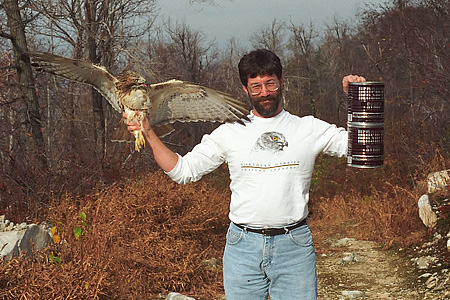
Inside the confines of the cozy blind and with the raptor restrained, he can be processed by a banding assistant or the trapper himself. When not being handled, the raptor-in-the-can is layed chest down so as not to impair his breathing.
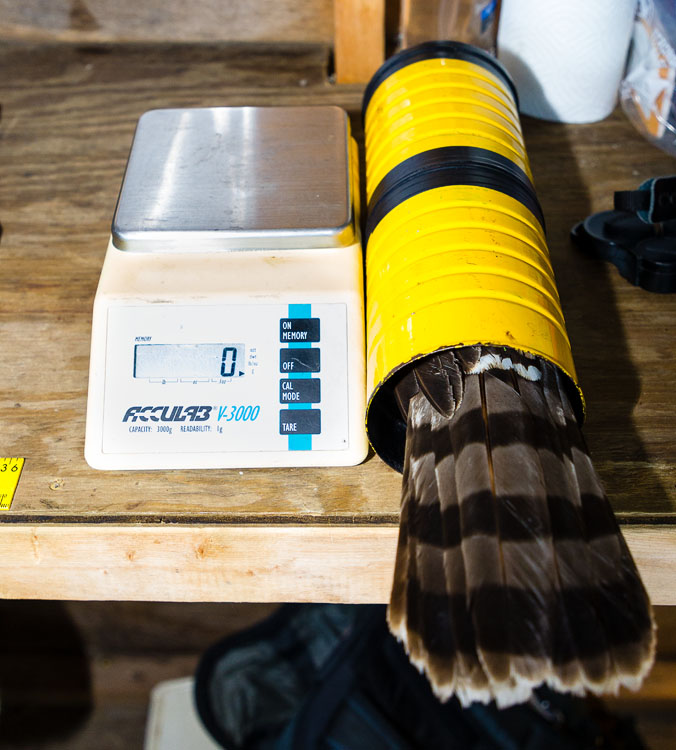
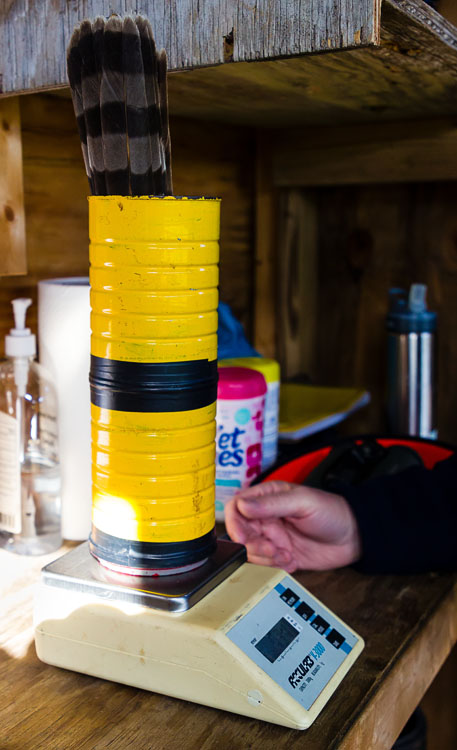
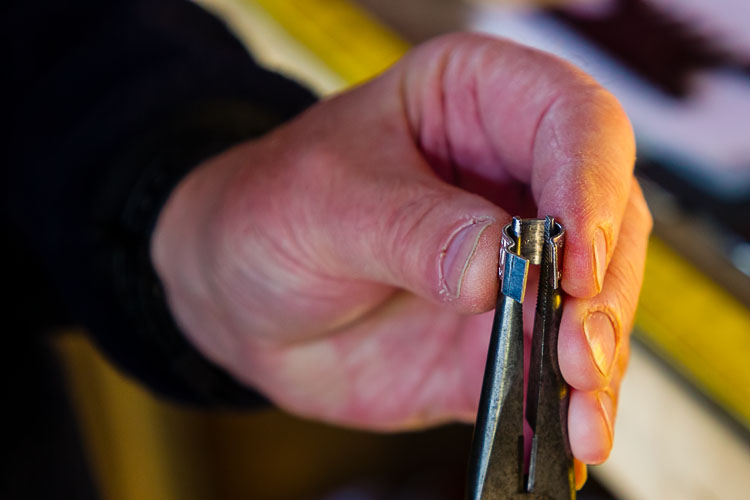
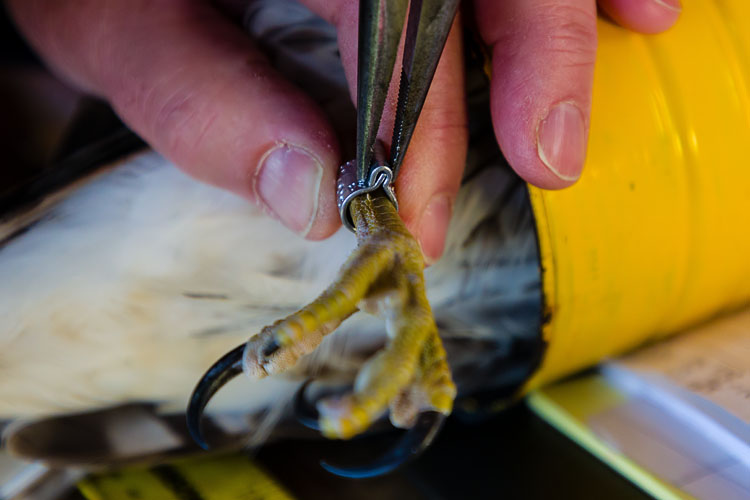
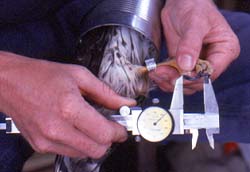
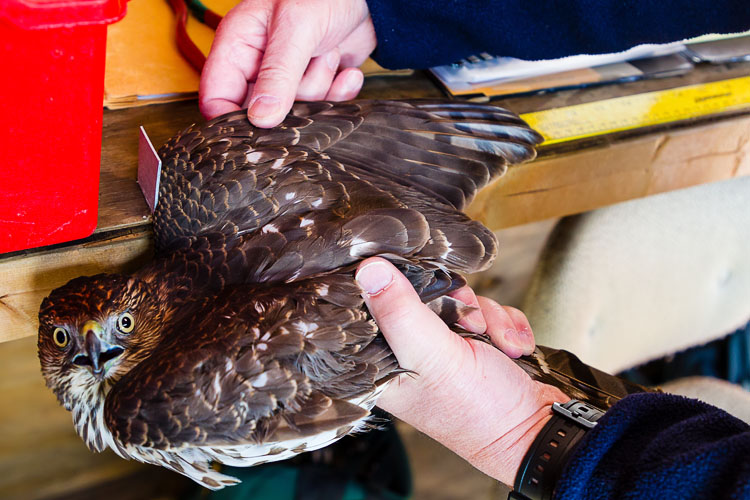
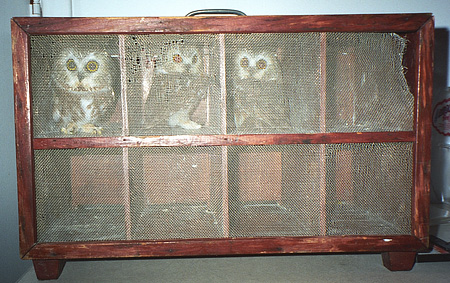
Then, after the hawk has been poked and prodded and all the relevant information collected, he is sent along his way.
More Than You Ever Wanted to Know About Raptor Banding
- About raptor banding
- How a typical raptor banding station is set up
- What a typical raptor banding blind looks like
Other Useful Links
- Bird Banding Laboratory (BBL)
- Monitoring Avian Productivity and Survivorship (MAPS) Program
- Coastal Virginia Wildlife Observatory
- Mason Neck National Wildlife Refuge
- Mason Neck State Park
- Occoquan Bay National Wildlife Refuge
- Kiptopeke State Park